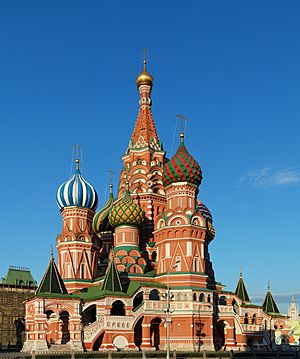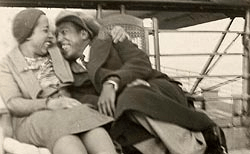Louise Thompson Patterson facts for kids
Quick facts for kids
Louise Alone Thompson Patterson
|
|
|---|---|
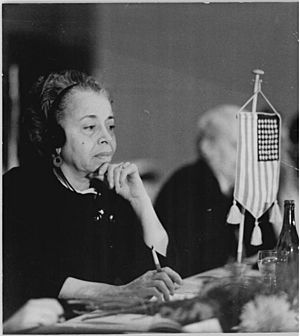
Patterson 1960 in Berlin
|
|
| Born |
Louise Alone Thompson
September 9, 1901 |
| Died | August 27, 1999 (aged 97) Amsterdam Nursing Home
New York City |
| Known for | Harlem Renaissance |
| Spouse(s) | Wallace Thurman William L. Patterson |
Louise Alone Thompson Patterson (born September 9, 1901 – died August 27, 1999) was an American social activist and college professor. She worked for civil rights for most of her life. Louise Thompson Patterson was also one of the first Black women to study at the University of California at Berkeley. She knew many important writers and artists during the Harlem Renaissance in the 1920s and 1930s.
Contents
Early Life and Education
Louise Thompson Patterson was born in Chicago, Illinois. She graduated from the University of California, Berkeley in 1923. At just 22 years old, she became a professor at the famous Hampton Institute in Virginia. This was a historically black college (HBCU). She taught there for five years.
After her time at Hampton, Patterson moved to New York City. She wanted to join the growing art scene in Harlem. At first, she worked in social work. But soon, she became a key person in the exciting literary movement there.
Working for Change: Across Countries
Louise Thompson organized many protests. She also opened one of the first important social gatherings, called "salons," in Harlem. But she became most famous for her close friendship with the writer Langston Hughes. Both of them admired the government system in the Soviet Union.
In 1932, Thompson started a Harlem group called the Friends of the Soviet Union. The American Communist Party chose her for a special project. She was to gather 22 writers, artists, and thinkers from Harlem. Their goal was to make a film for a Soviet company. This film would show the unfair treatment of Black people in the United States. Many important people from the Harlem Renaissance joined this group. These included authors like Dorthy West and Langston Hughes.
The film project did not happen because of money problems. Also, U.S. business leaders pressured them to stop working with the Soviet Union. After this, Thompson and Hughes returned to the United States. They then started the Harlem Suitcase Theater. This theater showed plays written by Hughes and other Black writers. All the actors were Black. In 1932, Thompson also led a group of African American actors who visited the Soviet Union.
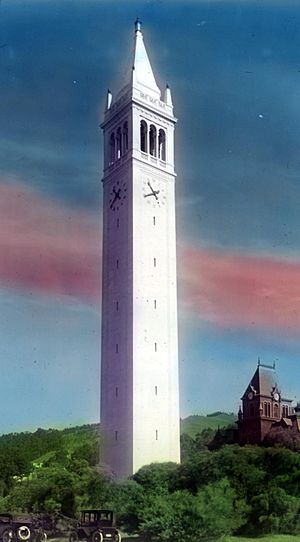
Working for Change: In the United States
After college, Patterson taught at Virginia's Hampton Institute. While there, she led a student protest. The students were upset about the mostly white administration's strict rules. During these protests, African-American students at Hampton sang old plantation songs. They sang them every Sunday afternoon to white visitors.
After these events, Patterson was not welcome at the Institute. This led her to move to New York City. She quickly became involved with many people from the Harlem Renaissance. This was helped by her connection to the Urban Institute. This group helped fund her studies at the New York School of Social Work.
Patterson also helped organize protests for the Scottsboro Boys. In Alabama, nine young African-American boys were accused of a crime. Patterson also helped create the Sojourners for Truth and Justice. This was a strong civil rights group led by African American women. Important members included Shirley Graham Du Bois and Charlotta Bass. This group believed Black women could bring about social change. They felt the country was unfair to women and African-Americans.
Thompson also wrote important articles. In her article, "Toward a Brighter Dawn," she wrote about the struggles of Black household workers. She focused on the "Bronx slave market." This was a place where Black women were hired for very low pay. Thompson explained that Black women faced "triple exploitation." This meant they were treated unfairly because of their race, their gender, and their social class. This was the first time the term "triple exploitation" was used in print. It was a big moment for Black feminism.
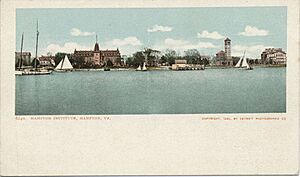
Family Life
Louise Thompson had a short marriage to the writer Wallace Thurman. They married in August 1928. Their marriage ended six months later. She later married William L. Patterson. He was an important member of the American Communist Party.
Later Years and Legacy
In the 1950s, she joined her husband in protesting against anti-Communist policies. These policies were led by Senator Joseph McCarthy. In the 1960s, she was involved in the Civil Rights Movement. However, by this time, other figures became more well-known.
Louise Thompson Patterson passed away on August 27, 1999. She was almost 98 years old. She died of natural causes in New York City. She continued to be active in political and social issues for the rest of her life.
In 2012, Patterson was featured in California Magazine. This magazine is for alumni of the University of California, Berkeley. Patterson shared her experiences as an African-American person during her early life. She showed how her life events connected to bigger changes and issues in civil rights in America. She also highlighted issues overseas in Russia. Patterson, along with many other Black female social activists, challenged the usual way of doing things. They helped open the way for future activists working for civil rights in the United States.


